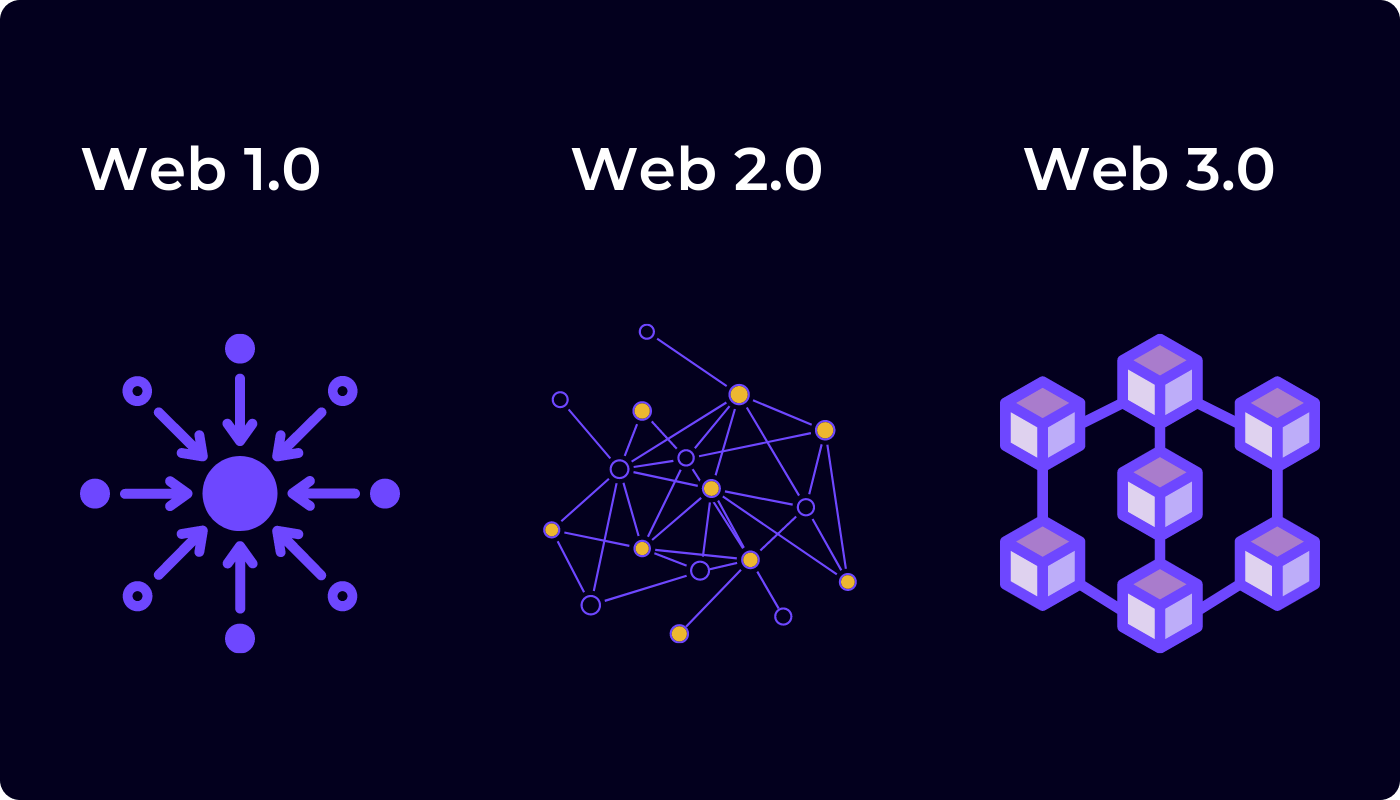Web3: 1 Revolution or 1 Risk? The Double-Edged Future of Decentralized Tech
Introduction: Hype or Hope?
I still remember my buddy bragging about buying Bitcoin in 2011. I laughed. He didn’t. He’s on a beach somewhere now — apparently “working remotely.” Sure, Greg.
Fast forward to today: we’re neck-deep in crypto, NFTs, DAOs, blockchains. Call it what you want — Web3 is the banner waving above this digital gold rush. Some hail it as the next internet. Others swear it’s a digital Ponzi scheme with extra steps.
So which is it? Revolution or risk? Let’s peel back the jargon and hype to see if Web3’s promise can outweigh its pitfalls — or if it’ll eat itself before it even finds mass adoption.
What the Heck Is Web3 Anyway?
First, a quick de-jargoning.
-
Web1: Read-only internet. Remember static pages?
-
Web2: Read-write internet. Social media, cloud apps, user-generated content — that’s us now.
-
Web3: Read-write-own. Peer-to-peer, decentralized, blockchain-based. Cut out middlemen. You own your data, your money, your digital identity.
That’s the sales pitch, at least. Whether you’re minting digital art or joining a DAO that runs like a co-op, the core idea is: Power to the user. Not the platform.
Why Web3 Sounds Like a Revolution
Alright, here’s the shiny side.
1️⃣ True Ownership
In Web2, you don’t own squat. Your tweets? Twitter’s servers. Your cat videos? YouTube’s ad inventory. Your personal data? Facebook’s gold mine.
Web3 flips that. NFTs mean creators own digital goods. Decentralized ID means no single login farm to get hacked. If it works? Control shifts from Big Tech to regular people.
2️⃣ Open, Permissionless Systems
No gatekeepers. If you’ve got internet, you can interact with the blockchain. Want to build an app? Deploy a smart contract. No Apple or Google approval queues. No bank telling you “nah.”
Sounds minor, but billions live where financial or internet freedom is a daily struggle. Web3 can (in theory) open doors that Web2 bolted shut.
3️⃣ New Ways to Monetize
Creators? Coders? Musicians? They can sell directly to fans — royalties baked into smart contracts. Programmers can earn crypto for contributing code. Communities can pool resources in DAOs to fund projects. Micro-economies everywhere.
It’s like Patreon, Kickstarter, and Wall Street all tangled up in one — minus the middlemen.
Mini Tangent: A Friend’s DAO Drama
Quick tangent. I joined a tiny gaming DAO last year. We pooled crypto to fund an indie game studio. One founder ghosted with 40% of the treasury. Oops. No support hotline. Just angry people in a Discord server wondering who to sue — and realizing they couldn’t. Decentralization cuts both ways.
Now, The Risks Nobody Loves To Admit
Time to kill the buzz for a sec.
Risk #1: Scams, Hacks, Rug Pulls
The same freedom that lets you build anything also lets scammers build anything. No refund button on the blockchain. If your wallet’s compromised? Bye-bye tokens.
In 2022 alone, blockchain exploits cost billions. Smart contracts are only as smart as the dev who wrote them — and humans? We miss stuff.
Risk #2: Environmental Punch
Proof-of-work blockchains (like Bitcoin) are notorious energy hogs. Ethereum switched to proof-of-stake — much cleaner — but the stigma lingers. If mass adoption happens without sustainability, the carbon footprint could be a PR nightmare.
Risk #3: Regulation? Or Annihilation?

Governments aren’t exactly jazzed about borderless currencies and untraceable money flows. Crackdowns are ramping up — from the SEC to the EU. KYC (know your customer) laws clash with Web3’s core ideal: anonymity.
Too much regulation? It strangles innovation. Too little? The Wild West vibe drives away mainstream users burned by scams.
Risk #4: User Experience Still Sucks
Let’s be honest — your mom isn’t buying an NFT with a hardware wallet anytime soon. Wallet keys? Seed phrases? Gas fees? UX is a minefield. Until it’s invisible tech, adoption’s going to stall outside crypto bros and developers.
The Double-Edged Sword in Practice
Imagine an artist sells an NFT collection. They pocket royalties forever. Love it.
Now imagine the same tech used for shady pump-and-dump schemes. Or ransomware payouts. Same tool. Different hands.
Web3 doesn’t care what you do with it. That’s powerful. That’s terrifying.
Is the Future Actually Decentralized?
So — is Web3 a revolution or a risk?
Honestly? It’s both. The concept of decentralized ownership, trustless transactions, and community-driven economies is brilliant. But the road there? Rocky as heck.
Here’s what’s next:
-
Better UX: Apps that hide the crypto guts.
-
Regulation balance: Clear rules without smothering innovation.
-
Sustainability: Greener consensus models, cleaner chains.
-
Education: More people who actually understand what they’re investing in.
5 Ways to Play It Smart (If You Dare)
Thinking about dipping a toe in the Web3 pond? Here’s how not to drown:
✅ Research Before You Click

If it promises 10,000% APY, it’s probably too good to be true.
✅ Secure Your Wallet
Use hardware wallets. Back up seed phrases. Don’t keep everything on an exchange.
✅ Diversify
Don’t throw your life savings into a single token or NFT drop. Spread risk.
✅ Stay Skeptical
Audit smart contracts if you can. Or follow trusted auditors. Blind trust is how rug pulls happen.
✅ Watch Regulatory Shifts
Where the law goes, your money goes. Keep an eye on crypto tax rules, new KYC laws, and international bans.
Internal & External Link Opportunities
-
[Internal Link: hadiatech] — A practical guide on Web3 wallet security.
-
[External Link: saadigraphics] — A deeper look at crypto sustainability trends.
Conclusion: The Revolution Is Real — But So Is the Risk
Web3 isn’t some distant sci-fi. It’s already shaping how we think about ownership, identity, and money online. For creators, builders, and communities locked out by old gatekeepers — that’s a revolution worth watching.
But the same open door lets in scammers, grifters, bad code, and bad actors. The freedom that makes Web3 exciting is also what makes it so risky.
One smart move? Educate yourself. One smarter move? Don’t FOMO in blind. And if you do — don’t forget your seed phrase.
So — are you ready for Web3? Or giving this so-called revolution a side-eye until the dust settles?




